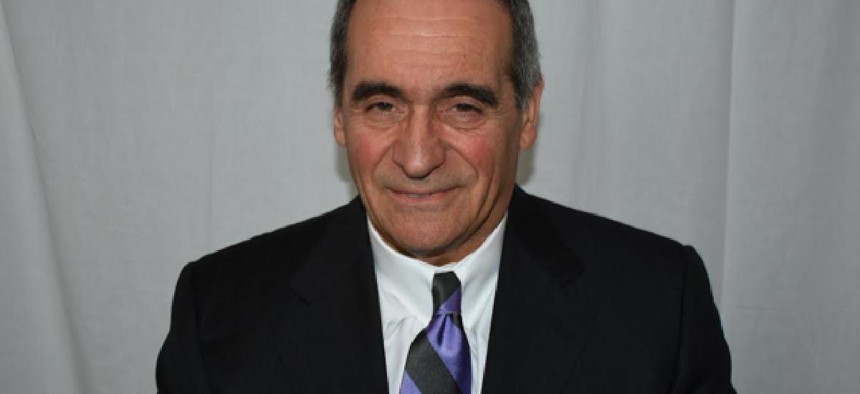NYN Media Insights Podcast on The Dynamics of Family Homelessness

This month, the Institute for Children, Poverty and Homelessness released a report and found some shocking conclusions. One of those was that the number of families in shelters increased by a third between the 2012 and 2015 fiscal years. Joining us to talk about the report is ICPH’s president, Ralph da Costa Nunez. He has been a CEO of Homes for the Homeless since 1987, is a veteran of city and state government, and is a professor at Columbia University’s School of International and Public Affairs. You can read the report, The Dynamics of Family Homelessness in New York City, here.
New York Nonprofit Media regularly interviews nonprofit leaders to discuss their professional experience, lessons learned, perspectives on the industry and more.To recommend a candidate for our CEO Corner, contact Dan Rosenblum at drosenblum@nynmedia.com.
If you don't see our podcast on iTunes, it should appear once you subscribe to the NYN Media Insights channel.You can also listen to our podcast via the embedded player above, using Stitcher on your web browser, or via your podcast app on iPhone and Android. Search for NYN Media Insights.
This interview has been edited for clarity and brevity.
NYN: What prompted the study and why is it important?
RN: Well, homelessness is in the news every day and it’s all over the place. You hear one neighborhood speak about it and you never see it in a cohesive way. It’s a neighborhood conflict. Some people want to do something, other people don’t want to do something. The idea on the report is, let’s take a look at everything and then we can take it apart.
NYN: There’s a lot of data on homelessness out there. What happens when you put it on a map? What do you see?
RN: You start to see a different picture. You start to see things, for example, that you wouldn’t realize. Some (City Council) districts in the city of New York have no shelters at all, yet every district in the city of New York has homeless children.
They don’t realize that, and whenever we focus on homeless, we just focus on the shelter or we think of the adult on the street. A very important thing about this is that it really puts a different face on it: It’s families, it’s children. Your typical homeless person in the city happens to be a 12-, 13-, 14-year-old kid. It’s not the adult you think.
NYN: The report said 13 percent of those who are homeless first entered the system during the administrations of former Mayors Ed Koch or David Dinkins, with another 13 percent entering under former Mayor Rudy Giuliani. What’s happening?
RN: What we’ve created in this county, in this city, actually, is what we can call “poverty nomads.” They move from generation to generation and their children, if you go back to the Koch years, people who were homeless then, their children start to think this is the norm. We move two or three times a year. When they grow up, they become the head of household. If you go to the shelter today, you’ll see kids who were children in the Dinkins and Koch administrations who now come with their own children and they’re homeless. So we have perpetuated a certain part of the population that this is the way they live, this is what they know. And maybe they’re never going to have enough because they lack the education – half of the homeless family population hasn’t completed high school. There’s no work experience – only 18 to 20 percent have any real work experience.
NYN: You want to see shelters be leveraged as community resource centers. Can you talk about what’s being done, and what you’d like to see?
RN: Today, it’s so bad that the shelters are overwhelmed and we’re in welfare hotels and we’re in what are called cluster site facilities, which are horrible, code violations are rampant, it’s just not a safe place for anybody.
The mayor talks about building 90 new shelters. Well, when are we going to make some kind of a change here and decide that something different has to be done? And the real fact is that homelessness is not simply about housing. Homelessness is about families who have no education, work experience, that can’t live independently. It’s about families who are victims of domestic violence that find themselves on the street over and over again. It’s about, in some cases, substance abuse and mental health. So what is the solution here? Another shelter that simply warehouses this kind of poverty?
What (New York City Mayor Bill) de Blasio should do is go a step further. Let’s leave Tier II housing, which he’s talking about building, and let’s go to a third tier. It’s not a shelter, but it’s a community residence with all of the services of day care, of after-school programs. The main core are employment programs, educational programs for the parents, a health clinic and (then) open it to the community as well as the families residing there. Now you have a residential community resource center. Communities aren’t opposed to that. Let’s put them in communities where they come from.
NEXT STORY: NY1's Zack Fink on Cuomo's quandaries
